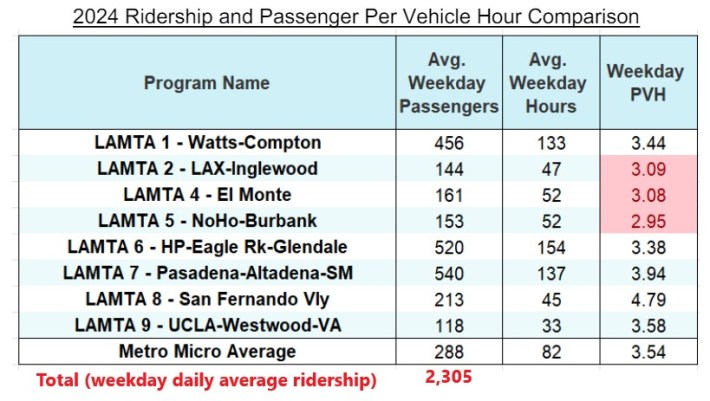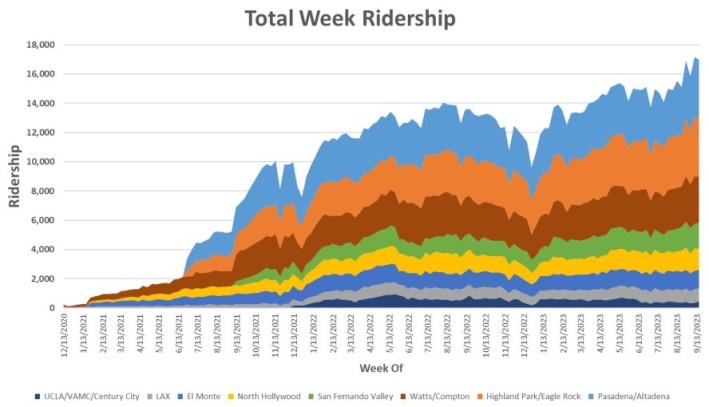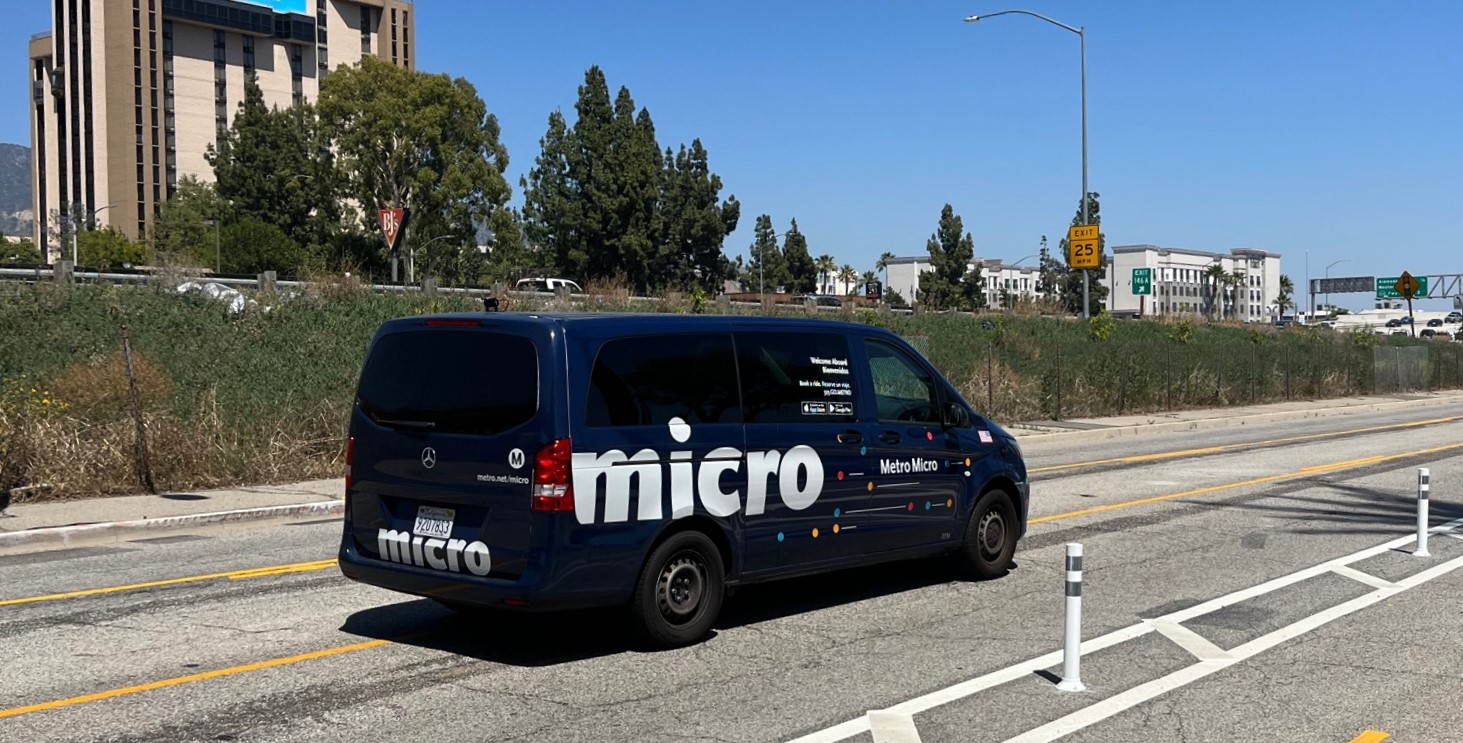This Thursday the Metro board Operations Committee will receive a staff report with a few new details on Metro's microtransit pilot, marketed as Metro Micro. Metro keeps trying to put a good face on the costly and inefficient program, which annually siphons $31+ million away from bus and rail operations.
The Metro microtransit situation hasn't changed much since SBLA's earlier harsh critiques, but below are a few lowlights from the new report.
Micro Ridership Remains Dismal
Maybe that's why they call it "micro"? For all of L.A. County, Metro Micro weekday ridership is currently just 2,300 daily riders. Ridership remains less than half of Metro's stated daily ridership goal to make the pilot a success: 5,090.

Metro graphs changing ridership statistics weekly and quarterly. All the agency's ridership reports basically show that microtransit ridership ramped up as service areas started, then overall ridership leveled off shy of 2,500 daily riders.


Few Riders Means High Cost Per Ride
With few people riding, Metro's per-trip subsidies remain fiscally unsustainable. In early 2023, Metro reported its cost per trip to be $62.97. In late 2023, the L.A. Times had it at $43. This month, Metro tried to put a good spin on it, noting that the "cost per trip decreased by 39%" recently going from $47 to $29 (in part because the agency ended steep discounts that put Metro Micro fares lower than bus fares).
It's good that Metro finally curbed unfair discounts, but even at $29 per trip, Micro costs the agency more than triple the ~$8 per trip cost for a low-performing Metro bus route.
Streetsblog has made the case that subsidizing these costs is an affront to equity. Spending limited transit operations to heavily subsidize Metro Micro amounts to subsidizing whiter suburban riders over working class communities of color.
When Costs Are High, Metro Looks to Outsource Workers
The one truly worthwhile thing about the Metro Micro pilot has been that its drivers are Metro staff (unlike ride-hail companies, which dubiously claim full-time drivers as contractors). Metro Micro drivers have full employee benefits, opportunities for advancement, and more. Metro has honored Micro drivers among its operations employees of the month.
But this appears poised to end. According to this month's staff report, "Metro negotiated... to allow for contracted operations of the MTP [MicroTransit Pilot] service [in order to] further reduce cost."
How About Discontinuing or Curtailing Micro Zones?
This month's report is a response to a board motion requesting a "recommendation of which [Metro Micro] zones are proposed to be discontinued or curtailed."
According to the Metro staff report, three zones - North Hollywood-Burbank, El Monte, and LAX-Inglewood - could be on the chopping block. Those three service areas "have consistently shown lower productivity and average ridership compared to other zones." Though instead of recommending pulling the plug (and putting Micro funding back into transit operations) Metro is considering undefined "service design changes aimed at improving productivity" for these zones.
There's no board decision this month, but the sooner Metro ends its failed microtransit experiment, the better.







